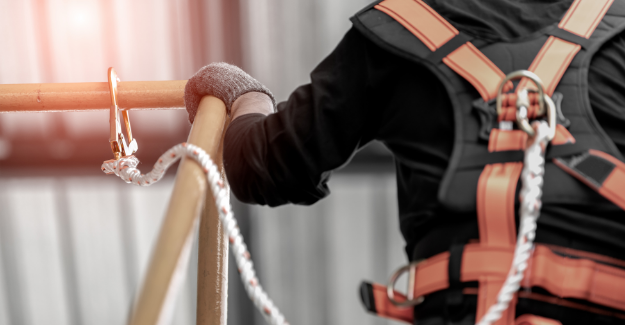
Standard Work
5 min read
4 Indirect Ways to Improve Safety on the Plant Floor

Safety managers have a multitude of safety strategies to protect the health and safety of their workforce. From PPE guidelines, LOTO programs, fire exit signage, the list is endless. However, in order to get the most out of your employees and resources, companies must look at all aspects of the organization that impact safety. Indirect ways of improving safety on the plant floor are often overlooked, and a missed opportunity.
Employees tend to do their job well when they have a solid safety culture. Research suggests about 49% more accidents and 60% more errors happen when employees are disengaged and safety is less of a priority. This results in lower production, profitability, and career growth.
Does your supervisor acknowledge you on your job when you point out safety risks or suggest improvements? Does your company reward its employees when they have proven their excellence when it comes to safety?
If the answer is “no”, then your company's safety culture has room for improvement. A better safety culture can be affected in ways like motivating their employees, rewarding employee initiative, providing training, and many more. Below are 4 indirect strategies for improving safety throughout your organization and company culture.
Minimizing Overtime
A study has shown that overtime and unbalanced shift schedules affect the well-being of workers. Long exposure to such conditions can lead to things like cardiovascular diseases, fatigue, stress, chronic infections, and so on. More importantly, it is not really hard to connect stress and fatigue with an increased level of safety incidents.
A balanced and well thought-out shift schedule that includes proper breaks can minimize a lot of these issues. That being said, creating better schedules is pointless if you do not work on eliminating the common causes of overtime work like:
- Unexpected equipment breakdowns
- Sudden surges in production quota
- Unproductive employees
- Workforce shortages
Depending on what is causing overtime at your facility, management should look to hire additional workers, cross-train employees, set an annual cap for overtime, track and improve employee performance, and create better plans for seasonal demands.
Implement a CMMS Software
Frequent machine breakdowns do not only result in overtime work, they can also create unsafe working conditions. The best way to prevent that from happening is by implementing a proactive maintenance strategy that will keep machines in good working condition.
However, planning for and ensuring that all PMs and routine maintenance tasks for all assets have been executed is almost impossible without a computerized maintenance management system (CMMS). A CMMS is a digital platform designed to help organizations manage all of their maintenance tasks through features like maintenance calendar, asset management, maintenance work management, spare parts inventory management, and more.
Some CMMS solutions allow you to create maintenance checklists that can include different safety guidelines and warnings for maintenance technicians to follow when performing assigned maintenance work. In addition to that, maintenance history can include notes about past safety incidents for a particular piece of equipment that technicians can be mindful of and take necessary safety precautions during maintenance, so it doesn’t happen again.
Upskill Employees Constantly
Skilled employees that know what to do and what not to do are less likely to be a danger to themselves or to other employees. Proper workforce training should be implemented to ensure all employees have the necessary skills to perform their tasks. Skills enhancements will also make an employee competent in unpredictable situations and reduce the chances of human errors that can lead to all kinds of safety accidents.
Additionally, employees should get specialized training for unique tasks. This can be done through peer-to-peer training, on-the-job training, video tutorials, and site demonstration. Trainers must ensure that they point out safety hazards on-site, explain safety controls, and promote safety culture.
Adopt an Inverted Leadership Style
Traditionally, the leadership style of a production organization is that managers are the “thinkers”, supervisors are the “thinkers/doers” and technicians, and machine operators are the ”doers”. It’s useful in some organizations but not like in a production plant.
A collaboration of ideas on how to execute a task can enhance camaraderie and empower a safety culture. All employees want to be recognized, rewarded and have a sense of purpose for a company. This leadership style is known to be an inverted leadership style.
Companies that have this kind of leadership style values their employees. Coaching their employees towards their full potential will help the organization be more reliable and ultimately more successful.
Safety is a Culture
Ultimately, safety is about protecting the people in your organization. Companies have a variety of safety strategies for their employees, but shouldn't discount how indirect approach can make a real impact. Implementing proactive asset management, ensuring proper employee training and development, and implementing different leadership styles, can all contribute to overall health and safety of your workforce.
Topic(s):
Standard Work
Related Posts
View All Posts
Training
How to Write Better Lockout/Tagout Procedures
7 min read
Lockout/Tagout (LOTO) procedures are some of the most common in industrial and manufacturing environments. Despite this, failure to adequately train employees on LOTO...
Continue Reading
Frontline Digital Transformation
OSHA's Recommended Strategies for Improving Safety Programs
5 min read
Workforce safety is non-negotiable for any industrial business. When mistakes can cause serious harm or bring operations to a halt, companies can’t afford to take safety...
Continue Reading
Standard Work
Best Methods to Reduce Human Error in Manufacturing
28 min read
In manufacturing, many factors need to be balanced and aligned for companies to be successful. And one of those factors includes the combination of humans and machines...
Continue Reading



